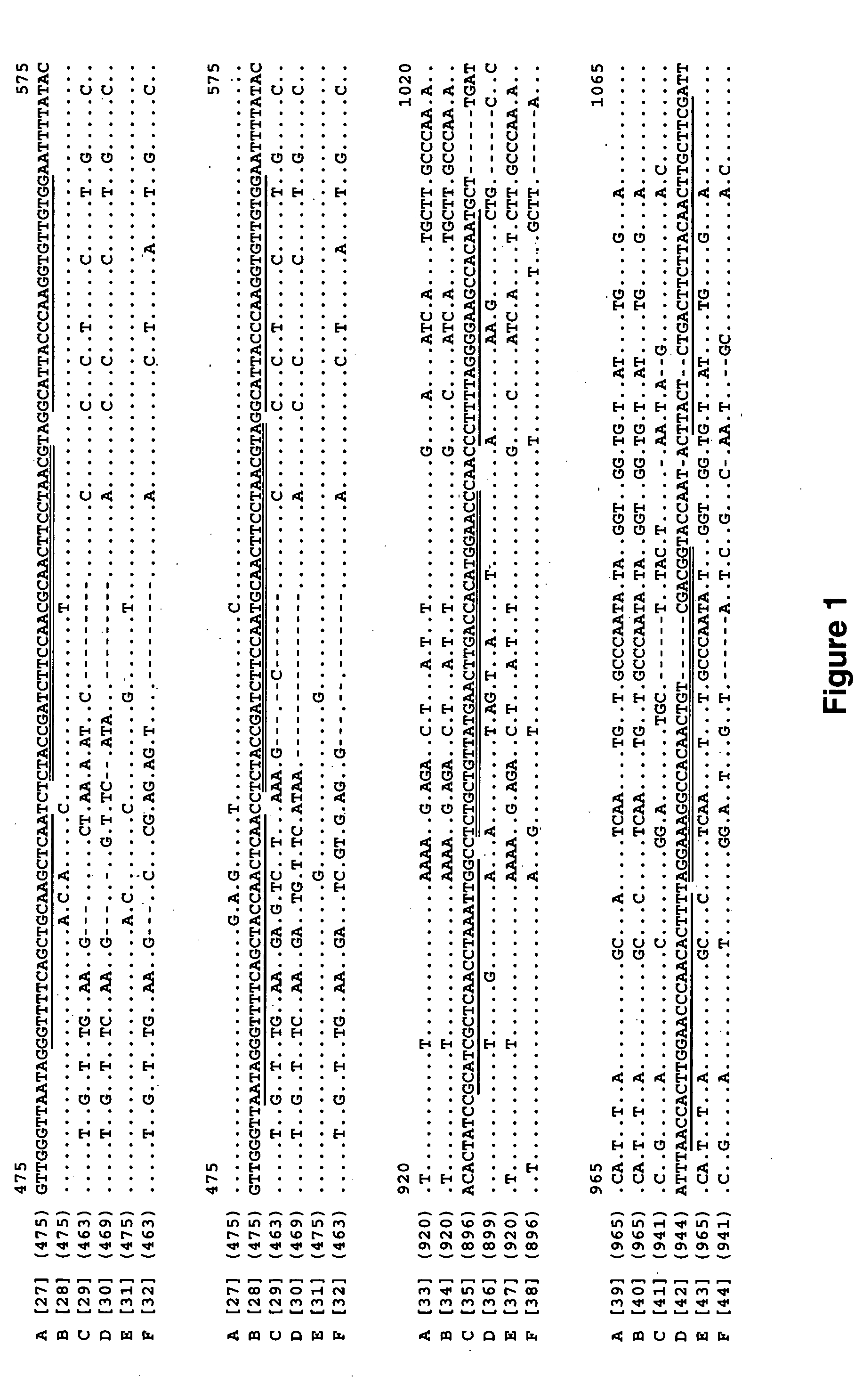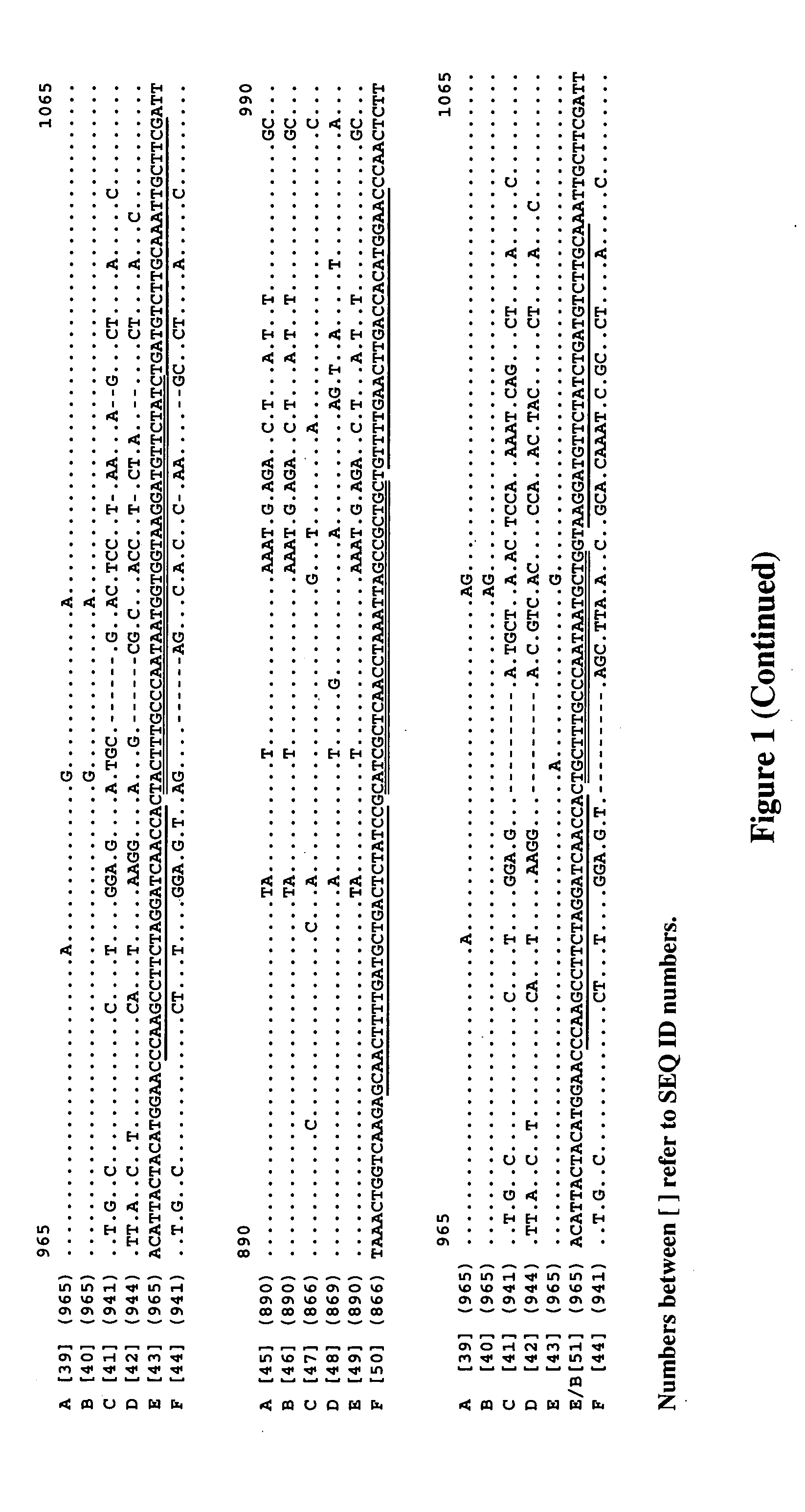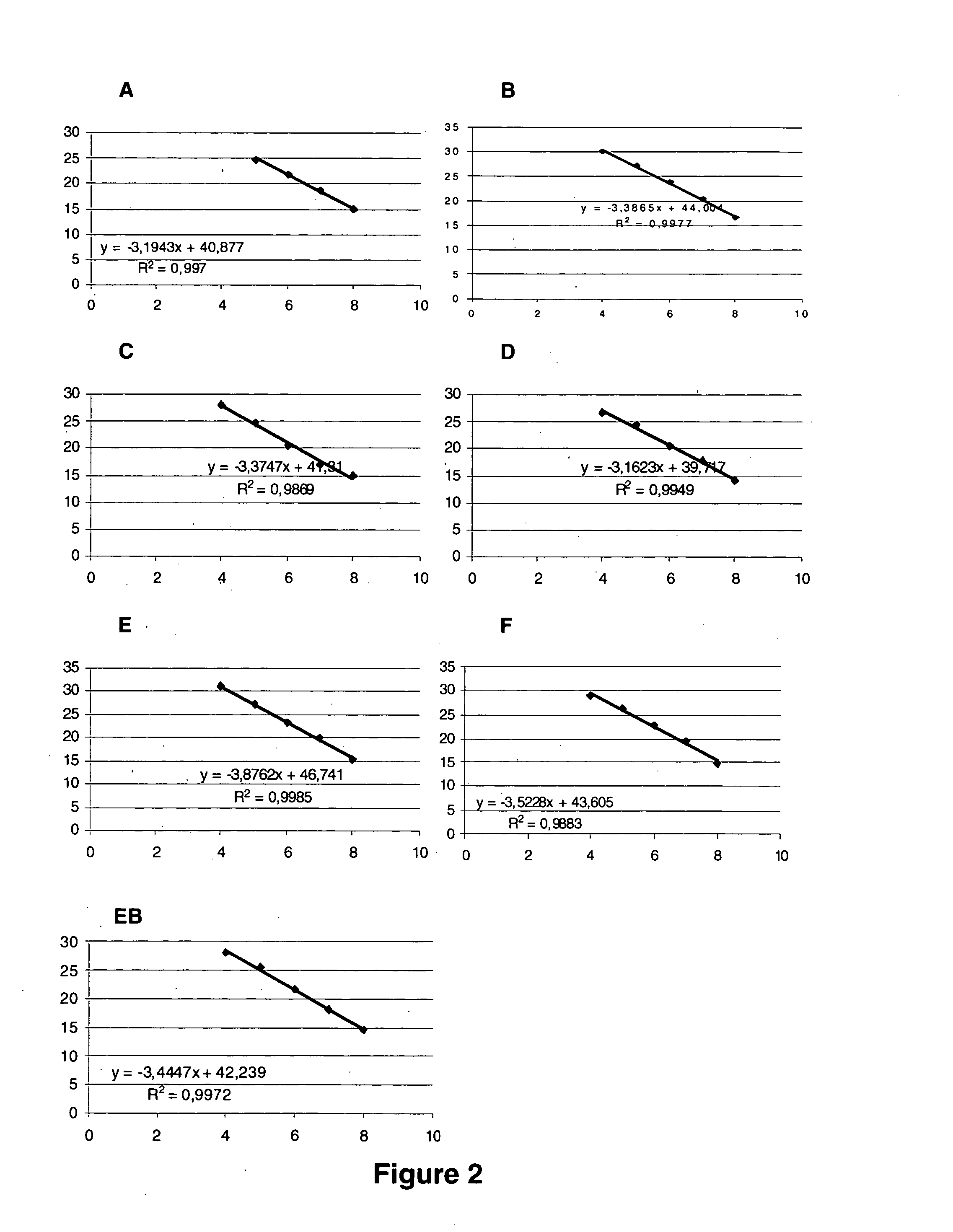Genotype specific detection of Chlamydophila psittaci
a technology of chlamydia psittaci and genotype, applied in the field of quantitative detection of chlamydia psittaci genotypes, can solve the problems of inability to meet requirements, poor specificity and sensitivity of cytological staining, and inability to use as a rapid preliminary investigation method
- Summary
- Abstract
- Description
- Claims
- Application Information
AI Technical Summary
Benefits of technology
Problems solved by technology
Method used
Image
Examples
example 1
General Methodology
[0067] Isolates and cell cultures. Cp. psittaci genotype A to F plus E / B reference strains 90 / 1051, 41A12, GD, 7344 / 2, 3759 / 2, 7778B15 and WS / RT / E30 (Table 1), were grown in Buffalo Green Monkey (BGM) cells. Infected monolayers were disrupted by freezing and thawing followed by ultrasonic treatment for 1 minute in a tabletop sonicator (Bransonic 12, BIOMEDevice, San Pablo, Calif., USA). The cell culture harvest was centrifuged for 10 min (1,000×g, 4° C.) to remove cellular fragments and subsequently concentrated by ultracentrifugation for 1 hour (45,000×g, 4° C.). Bacterial pellets were resuspended in Sucrose Phosphate Glutamate buffer (SPG) (218 mM sucrose, 38 mM KH2PO4, 7 mM K2HPO4, 5 mM L-glutamic acid) at a volume of 1 to 100 of the original culture volume and stored at −80° C. until use.
[0068] DNA extraction. Genomic DNA was prepared as follows. 200 μl cell culture harvest was centrifuged for 30 min at RT (16,000×g). The supernatant was discarded and the pe...
example 2
Genotype Specific Identification of Cp. psittaci
[0078] The present invention demonstrates for the fist time the use of real time PCR technology to detect seven different avian Cp. psittaci genotypes in human and animal samples and offers the possibility to discover new Cp. psittaci genotypes.
[0079] Using genotype specific reference plasmids, all seven PCR's (A to EB) are able to detect 10 copies of plasmid per μl. Standard curves could be made from 108 to 105 copies per μl with almost ideal slopes around −3,3 and correlation coefficients higher then 98,5% (FIG. 2). The highest dilutions were not taken into account for the regression because the reproducibility was too low, they reached the threshold around the same cycle or only after cycle 40.
[0080] The competitors which have been used in the PCR methods of the present invention are oligonucleotides without a fluorescent signal that go in competition with probes that bind to the target sequence. In Fluorescence In Situ Hybridiza...
example 3
Genotype Determination
[0082] Genotype A. The Chlamydophila psittaci genotype A specific competitor for binding on genotype B (CpPsGAScomB) [SEQ ID NO:8] has to be added to the reaction mixture to prevent false positive results if genotype B is possibly present in the sample. When added, the competitor will bind the genotype B DNA, leaving the probe only the binding site on genotype A, if present. As the competitor sequence is complementary to the genotype B sequence, the affinity is higher for this genotype, while the probe off course preferentially binds genotype A.
[0083] Genotype B. In genotype B determination, an elevated temperature can enhance the probe specificity: a specific reactions with genotypes E and EB disappear when the reaction is carried out at 63° C. in stead of 60° C. Addition of the competitor for genotype A material CpPsGBScomA [SEQ ID NO:7] will prevent false positive reactions if genotype A material is present.
[0084] Genotype E. Addition of both CpPsGEScomA / ...
PUM
| Property | Measurement | Unit |
|---|---|---|
| temperatures | aaaaa | aaaaa |
| temperatures | aaaaa | aaaaa |
| temperatures | aaaaa | aaaaa |
Abstract
Description
Claims
Application Information
 Login to View More
Login to View More - R&D
- Intellectual Property
- Life Sciences
- Materials
- Tech Scout
- Unparalleled Data Quality
- Higher Quality Content
- 60% Fewer Hallucinations
Browse by: Latest US Patents, China's latest patents, Technical Efficacy Thesaurus, Application Domain, Technology Topic, Popular Technical Reports.
© 2025 PatSnap. All rights reserved.Legal|Privacy policy|Modern Slavery Act Transparency Statement|Sitemap|About US| Contact US: help@patsnap.com



